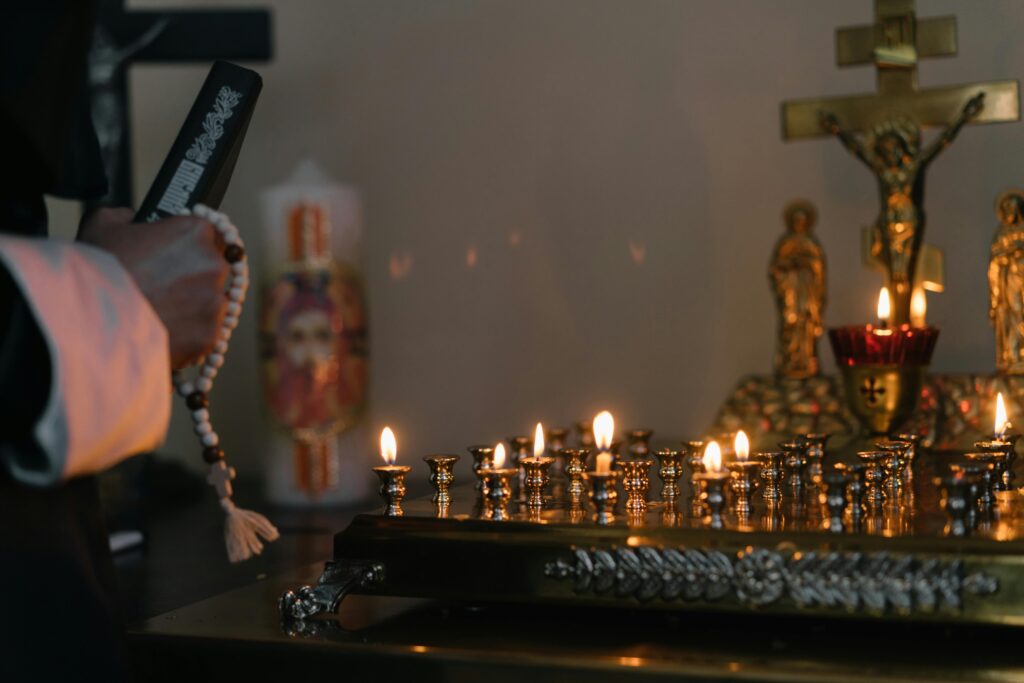You might be thinking that it’s the priest’s greeting or the opening hymn that marks the beginning of a liturgical celebration. However, that’s not the case. Right before the Mass, when the church basks in a unique silence, devotees or believers perform one of the most sacred jobs. And this is nothing but the preparation of the altar. It is not just a part of an age-old ritual. Rather, it holds a deep symbolic significance in everyone’s life. After all, the altar serves as the platform where heaven and the earth meet or a podium where Christ’s sacrifice is made visible for everyone.
So, it is more than setting up the vessels and the linen on the altar table. Consider it as a phase that prepares the heart of the Church for an encounter with God himself. That being said, we have prepared a detailed study on how the altar preparation acts as a reflection on eucharistic reverence in every Christian’s life.
The altar acts as a sacred table
For ages, the altar has been central to Christian worship and prayers. If you study the Old Testament, you will come across numerous events where the table was used as the platform for sacrifices. In other words, it served as the table where offerings were made to God himself. On the other hand, the New Testament explains how the altar finds its fulfillment in Christ Himself. After all, when he was sacrificed, he became both the priest and the victim.
Whenever there is a Mass, it serves as the table of the Last Supper and a place of displaying the Eucharist. When you are preparing the altar, you aren’t just decorating a wooden table with different adornments. Rather, you are reverently setting the stage for re-representing Christ’s sacrifice. From the clothes used to the vessels kept on the table, every action points to this sheer reality.
The meaning and significance of altar linens
The first job is to lay out the linen cleanly on the altar table. It can be a special altar cloth or a purificator. Every textile holds a special significance and purpose, as explained below.
- The Altar Cloth: It gives a clear reminder of Jesus’s body wrapped in a white linen shroud in his tomb. In other words, the fabric exemplifies the dignity and purity of the liturgical celebrations.
- The Corporal: This textile is placed right at the center, serving as the base for the sacred vessels. It is pure white in color, square-shaped, and symbolizes the clean state of the heart, ready to receive Christ.
- The Purificator: Although much smaller in size, it holds immense significance. You will find them being used to clean the chalice and paten after every Communion. This is done to ensure no particle of the Body or drop of Christ’s Blood is lost.
The sacred vessels- More than metals
Once the linen is spread out on the altar, people get started with the sacred vessels– paten, chalice, cruet, and ciborium. Now, you might be wondering if these are just placed there for practicality or not. To clarify your doubts, that’s not the case. Instead, every vessel here is meant to hold the Body and Blood of Christ. Usually, these are made from precious metals. Their unfathomable beauty reflects the pricelessness of the Sacrament they are meant to contain.
Here’s how.
- The chalice represents the cup Christ took during the Last Supper, thereby declaring itself as the “cup of the new covenant”.
- The paten will hold the bread, which will ultimately become the Bread of Life.
- The consecrated Hosts to the faithful will be carried in the ciborium, ensuring that Christ is accessible to all who are ready to receive Him.
Every deacon, server, or priest who will touch these vessels should always remind themselves that these are sacred.
Preparing with prayerful intent
The art of altar preparation transcends the backstage chore. It signifies liturgy in motion. Every person involved in the task does the work in silence, almost invisibly, but with their hearts turned toward God. It is believed that the preparation itself acts as a prayer without words spoken out loud. The more prayerfully the altar is decorated and prepared, the more the communities are invited to delve deep into the reverence once the Eucharist celebration commences.
Silence- The language of reverence
One of the most powerful and impactful aspects of altar preparation is silence. The deliberate pace, the subdued and subtle movements, and the absence of unnecessary clutter sounds create a space where the sacredness can be felt in every cell of the body. It has never been about emptiness, but serves as a language of reverence. In that moment of stillness, the heart prepares itself for witnessing the greatest mystery of faith.
Conclusion
Preparing the altar is a liturgical act of love, where every linen spread and every vessel placed points to the One who offers Himself to his disciples completely. It holds immense significance in fostering spiritual growth and renewing faith in the heart of every believer.



